This week we are taking a look at the Cooler Master Hyper 212 EVO, which is an update to the Cooler Master Hyper 212 Plus (aka the Hyper 212+) that I recently reviewed. Cooler Master’s Hyper 212 line has been very popular because it provides competitive cooling at a very competitive price. The intent of this Cooler Master lineup is to provide good performance at a high value. Generally speaking, with the Hyper 212 line first launched in 2007, enthusiasts have seen Cooler Master deliver in this segment quite regularly. I will say that the focus of my CPU cooler reviews tends to be the LGA 2011 platform as it runs very hot. I have tried the Hyper 212 EVO on my Ivy Bridge based Core i7-3770K and have found it to be more than adequate. With the 22nm process, Ivy Bridge runs very cool and soon we are expecting very low power consumption Intel Xeon E3 chips also based off of the 22nm process. Let’s take a look at what Cooler Master offers.
Test Configuration
The test configuration for this series is going to be my single-processor LGA 2011 test bed.
- CPU(s): Intel Core i7-3930K and Intel Xeon E5-2687W at 3.1GHz
- Motherboard: ASUS P9X79 WS
- Memory: 32GB (8x 4GB) G.Skill Ripjaws X DDR3 1600
- Drives: Corsair Force3 120GB, OCZ Vertex 3 120GB 2x OCZ Agility 3 120GB
- Chassis: Corsair Carbide Series 500R
- Power Supply: Corsair AX850 850w 80 Plus Gold
This is going to be fairly typical for a LGA 2011 workstation with either and Intel Xeon or Intel Core i7 CPU.
The Cooler Master Hyper 212 EVO
Servers and workstations often come with a chassis that includes all necessary fans but on 3U and larger enclosures, typically active coolers are utilized. The Cooler Master Hyper 212 EVO is a very easy cooler to install but be warned, it is likely too large to fit in a 4U server. I use both the Hyper 212 Plus and Hyper 212 EVO models quite often on personal systems and around the lab (see below) so I can do a complete installation in about three minutes at this point, including thermal paste installation.
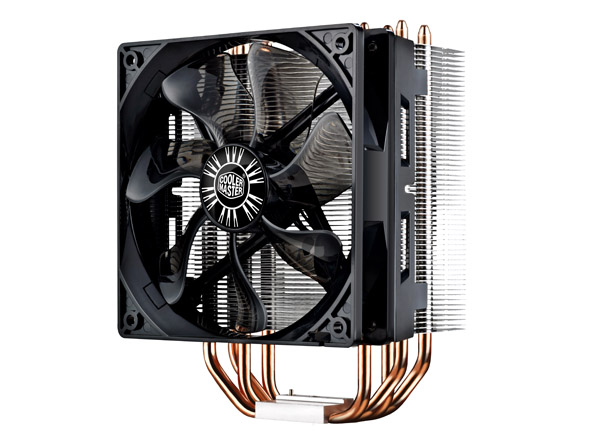
The Hyper 212 EVO utilizes four heat pipes and an aluminum fin tower cooler design. The heat pipes use what Cooler Master calls “Continuous Direct Contact” which more or less means that they have a continuous copper base in contact with the CPU heat spreader versus a mixed copper and aluminum base featured on the Hyper 212 Plus.
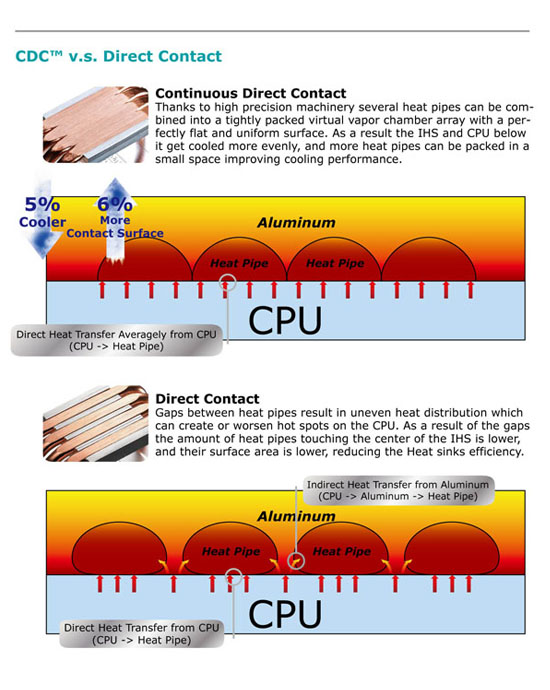
The other big improvement over the Hyper 212 Plus is that the Hyper 212 EVO receives a newer fan and a second fan can be purchased and added. Some CPU coolers have heatsinks that overhang their mounting points making installation very difficult using standard screwdrivers. The Hyper 212 Plus does not suffer from this common installation caveat. Just to see a cool picture of what two of these look like installed on a dual LGA 2011 motherboard:
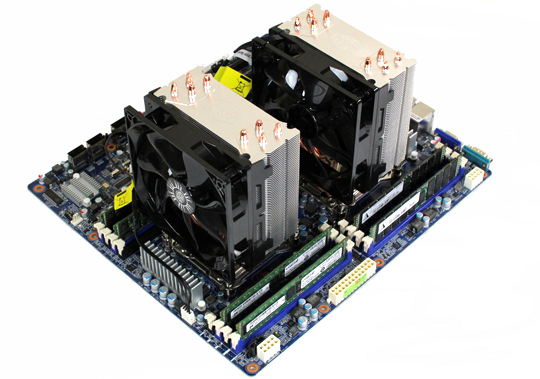
As one can see, the coolers do not leave a ton of room, but one can fit them even on a server motherboard meant for dual Intel Xeon E5 series CPUs. For those wondering, this setup was barely audible at idle using the PWM motherboard controls.
Performance
For Intel Xeon E3-1200 series processors, I would suggest that these CPU coolers are all overkill as 80-95w TDP is relatively low. Ivy Bridge versions are going to be 77w or less, further eliminating the need for a high-end cooler. The Intel retail CPU cooler is very sufficient in the Sandy Bridge and Ivy Bridge range. With chips such as the Intel Core i7-2600K or Core i7-2700K, i7-3770K the Corsair H80 or H100 may start to make sense because there is a lot of overclocking potential, and therefore heat available. On the lower-power platforms, the low and medium fan settings are all one needs (this one can select by simply pressing the circular fan button on the waterblock.) While that was all well and good, I decided to use some hotter processors. Namely a 150w LGA 2011 8 core/ 16 thread Intel Xeon CPU running at 3.1GHz and a Core i7-3930K running at 4.54GHz. Those two chips generate a ton of heat. To keep the CPUs loaded I am using the Folding@Home client using the -smp -bigadv flags to keep all cores and threads highly active for hours at a time. Total run time for each test was 6 hours. I probably need to find something a bit faster, but I wanted to make sure that I was getting the units good and heat soaked. My expectation is that this site has users that want continuous stability rather than a few minutes for a quick maximum benchmark run.
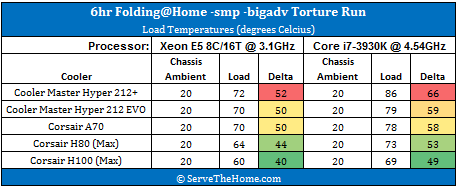
In the next few weeks I will be adding more to this little chart. The 6+ hours for each run (and I average three runs) have not given me a ton of time to test many of these at this point. A lot of other reviews I found online used overclocked 95w TDP CPUs. With the new Intel Xeon E5-2600 series 150w (at stock clocks) 8C/16T chips will be available, making it very interesting to use as a test subject at stock speeds. On the other hand, the Intel Core i7-3930K provides a very hot platform for CPU cooler testing. I prefer using these two chips as good representatives of “hot” chips.
Here is the thing, the Hyper 212 EVO, like the Hyper 212 Plus does not top the charts by any means, and that was not the intent of Cooler Master. The $5 or so price premium over the Plus model for the newer EVO model is probably worth it for a lot of users. Compared to the water coolers, the Hyper 212 EVO is around a third of the price so Cooler Master provides an upgraded “good enough” cooler for the market at an affordable price. For an inexpensive LGA 2011 CPU cooler for Intel Xeon or Intel Core i7 CPUs based on either Sandy Bridge (including Sandy Bridge-E and Sandy Bridge-EP) or Ivy Bridge architectures, the Hyper 212 Plus is more than adequate so long as one is not going to do a massive overclock.
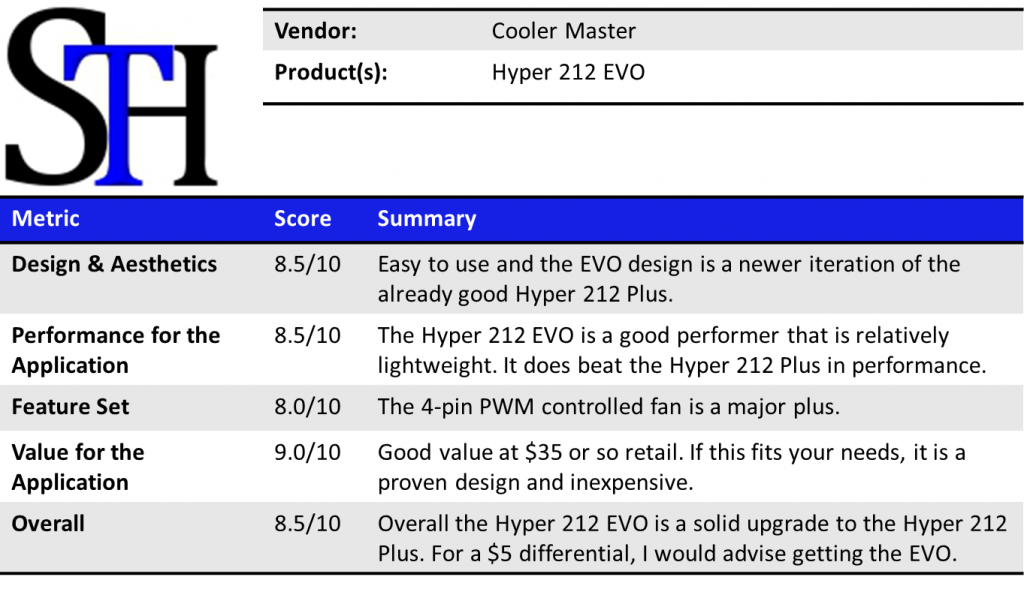

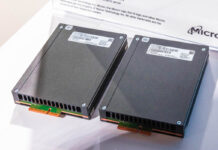


Can you verify that everything needed to install the Evo on a LGA 2011 motherboard is included in the box? NewEgg lists a separate mounting bracket for 2011, but the Evo lists 2011 as a supported socket. Can you share your experience in that regard? Thanks!
blckgriffn – My Hyper 212 EVO’s came with the LGA 2011 standard mounting pattern brackets out of the box. From what I understand all of the new ones do. They also have a program where you can get one sent to you.
There is also a slim LGA 2011 mount pattern that uses different layout. These are usually found in dense server boards.
Hi
Thanks for review
Can you fit this in Norco 4220 chassis as some of your reviews (gigabyte pesh) would seem to suggest.
Glenn
Hi there,
First of all thanks for this great review 😀 But could you tell me if I will be able to OC a 3770k to 4.4-.4.5? (Will make it a Push/Pull configuration)I will put it in my haf 912 plus.
Thanks! Friendly regards from The Netherlands 😀
Looks like you are using the Gigabyte GA-7PESH1 motherboard and not the ASUS P9X79 WS. Thanks for the review.